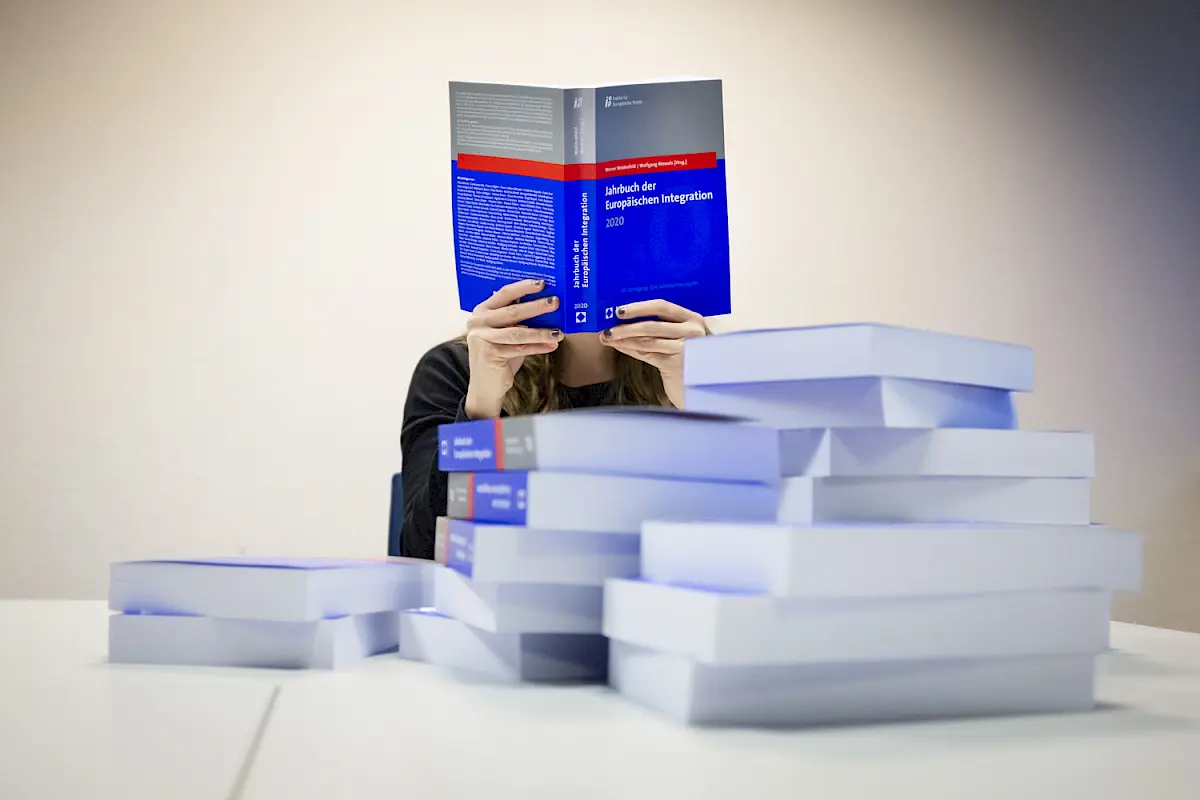The monitoring of the European integration process through the first Yearbook of European Integration started in 1980 with the assessment that "it seems […] overdue to attempt a continuous, critical analysis of the unification process in the form of a Yearbook of European Integration, which on the one hand should be as up to date as possible and on the other hand provide scientifically sound analysis". While at the beginning there were 30 contributions and nine Member States of the European Communities, 40 years later the Yearbook has substantially evolved encompassing 111 contributions and the EU 27 Member States. However, it has always remained committed to an up-to-date and scientifically sound analysis. Especially the diversity of contributions gives evidence of the continuous differentiation of the process of European integration and its corresponding policy fields, but above all the success of “Project Europe”.
We are honoured that the President of the Bundestag, Dr Wolfgang Schäuble, introduces this Yearbook with a foreword for this special occasion. 2020 is nevertheless not only a festive anniversary, but also a crucial year. Europe is under great pressure, as Werner Weidenfeld underlines in his Résumé (“Bilanz”): The global Covid-19 pandemic, whose economic, social and constitutional consequences are still difficult to estimate, determines the political agenda of the European Union and the everyday lives of its citizens. Important political negotiations and projects – the multiannual financial framework (MFF) for 2021 to 2027, the agreement on the future relations between the European Union and the United Kingdom and the start of the conference on the future of Europe announced with much publicity, to name but a few — are overshadowed by the unpredictability of the global The Covid-19 pandemic and its impacts (“Covid-19-Pandemie und ihre Auswirkungen”), which Manuel Müller deals with in an individual contribution.
The year 2020 began with the United Kingdom’s withdrawal from the EU on 31 January 2020. The subsequent negotiations between London and Brussels on their future relations are analysed from both perspectives in the contributions on Brexit and The United Kingdom and the European Union (“Das Vereinigte Königreich und die Europäische Union”). The chapter on the “Institutions of the European Union” (Institutionen der Europäischen Union) sheds light on the new appointments of the EU institutions after the 2019 European elections and provides an interim review of their crisis management during the first months of the pandemic. In their contribution on The institutional architecture of the European Union (“Die institutionelle Architektur der Europäischen Union”), Carsten Gerards and Wolfgang Wessels conclude that the European Council opened up new opportunities for supranational integration by agreeing on the EU recovery fund during a marathon meeting in July 2020.
The constant differentiation of European integration described is reflected in two new chapters on the political infrastructure about Europe in the media by Jon Worth and the conference on the future of Europe by Manuel Müller.
The individual contributions on the internal policies of the European Union offer more in-depth detailed analyses of developments in individual policy areas. In his contribution on budgetary policy, Peter Becker looks at the various proposals and negotiating steps for the next multi-annual financial framework from 2021 to 2027, and Gabriel N. Toggenburg's contribution on the rule of law and its impending erosion in some EU member states makes complementary reading. The core project of the new European Commission under German President Ursula von der Leyen - the European Green Deal - is described in detail by Klaus Jacob in his contribution on environmental and climate policy as an environmental and climate policy meta-strategy. The growing tensions in the international environment are illustrated by the contributions on the foreign policy of the European Union: The roller coaster of shock and hope for a diplomatic turnaround in transatlantic relations in view of the U.S. presidential election in November 2020 is traced by Niklas Helwig in his contribution The European Union and the United States. In the article on Turkey, Funda Tekin looks at the ambivalent EU-Turkey relations and concludes that the EU needs to contain Turkey's confrontational policies with a positive agenda.
Friederike Augustin and Katrin Böttger provide background information on the protests in Belarus following the presidential elections in the summer of 2020 in their article on the Eastern Partnership, which can be found in the chapter on the European Union and its neighbors. Barbara Lippert explains the reformed methodology of EU accession negotiations in the article on the European Union's enlargement policy in the corresponding chapter.
The chapter on European policy in the member states of the European Union takes an overall look at the massive socioeconomic impact and casualty figures of the Covid 19 pandemic. In this overall context, Katrin Böttger and Funda Tekin trace the high expectations placed on the Federal Republic of Germany in preparation for Germany's presidency of the EU Council on the basis of current political challenges.
Downloads & sources
 Share publication
Share publication








